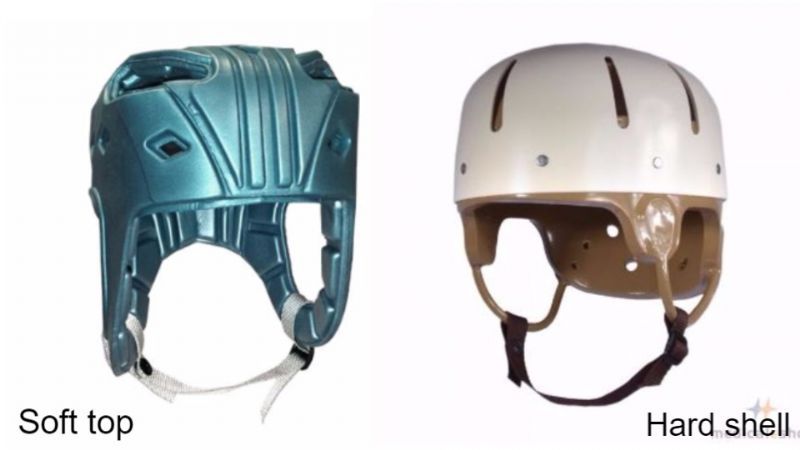 Written by Mike Price, OT
Written by Mike Price, OT
Protective helmets are a form of specially-designed medical equipment designed to significantly reduce the risk of head injuries, as well as protect a patient’s head following surgery. These devices are also useful for patients who suffer from seizures or those who display “head banging” behaviors, as protective helmets can prevent impact injury to the patient’s head and brain.
When it comes to secure, safe protective helmets, there is no such thing as one-size-fits-all. The size of a protective helmet determines user fit, and how the helmet stays in place during physical movement.
With that in mind, customers should check the sizing options and correlating measurements of the products they are considering prior to purchase.
While most helmets are available in a range of sizes (small, medium, large, and extra-large), some are specifically intended for children, while others are sized for adults.
Measure the user’s head circumference in three places: at eyebrow level, from eyebrow level to the back of the head, and from the top of one ear to the top of the other.
.jpg)
All patients are different, and so are the helmets best suited for them. The initial first step in choosing a protective helmet is determining which helmet is designed for your loved one’s individual needs.
A full-coverage helmet is ideal for a person prone to thrashing, self-abuse, or sudden, unpredictable movements. Full-coverage helmets extend from the crown of the head to cover the wearer’s ears, forehead, jawline, and often, the nape of the neck.
Partial coverage helmets are great for individuals who are less physically aggressive, and who need a helmet as an additional safety measure rather than a primary defense. Partial coverage helmets typically cover the same area of headspace as a traditional cycling helmet, focusing more on the protection of the top half of the head and forehead.
When in doubt, each helmet available from Rehabmart.com will include a product description of its intended use!

Given the diversity of helmet styles, it likely comes as no surprise not all helmets are made from the same materials! Here, there are two areas of helmet material to talk about: helmet exterior, and helmet lining.
Some helmet linings are composed of a firm, protective foam material while others are a soft fabric blend of cotton or foam stuffing. Other helmets combine one of the two aforementioned compositions with a plastic outer coating, which adds an additional layer of protection.
Determining the composition that is most comfortable and best suits you or your loved one is yet another important consideration to make when purchasing a protective helmet.
Sometimes, individuals find they dislike wearing a protective helmet in a public setting. Because the nature of helmets is noticeable, some users may opt to have one helmet for private, or in-home use, and another for public use.
Many lines of helmet manufacturers create helmets with are available in discreet formats. This can look like a helmet modeled to look like a baseball cap, or a helmet more stylishly designed with an attractive colour and more subtler shape.
Just as each helmet is different, so are the additional features offered with each helmet!
These additional features can provide patients with an added degree of safety, comfort, or personal touch. Some of these features include facial protection (face guards), chin straps, and coloring options.
Other, less common features include visors and patterned designs. Because not all protective helmets include these options, and it’s worth looking over each product’s additional features to make sure you or your loved one’s needs are met!
The selection of protective helmets available from Rehabmart includes a number of different shapes, styles, and other options. The helmets are both high-quality and reliable, produced by trusted medical supply manufacturers such as Danmar, Fabrication Enterprises, North Coast, Patterson Medical, and Kids Safety Hats. Each helmet has distinct advantages for attending to the needs of certain patient types.
Here are some of Rehabmart’s top-rated protective helmets, and their noteworthy advantages:
The necessity of head protection cannot be overstated, as head injuries are among the most life-altering and dangerous injuries sustainable. The use of a helmet will considerably decrease the threat of head trauma to a loved one or patient.
Protective helmets are composed of different materials, depending upon the product’s intended use. Many protective helmets related to clinical care - following a procedure, or while in a hospital environment - feature a dense, protective foam shell.
Other helmets, such as those for use in athletics or preventing head trauma caused by head banging behavior, are cloth-based and stuffed with padding. These also typically include a leather or plastic outer coating for shock absorption.
Protective helmets are an essential piece of medical equipment for persons prone to seizures, self-abusive behaviour, or any condition which places the user at risk for sudden or unexpected drop falls or aggressive cranial movement.
Protective helmets are also effective at significantly reducing the risk of a patient sustaining a head injury post-surgery. Because of this, these helmets are frequently used to protect patients following an operation, particularly when the operation has to do with the head.
Helmets are also critically important tools for protecting patients who are prone to seizures or those who display head banging behavior, as these patients are at risk of injuring their heads during these times.
Several other protective helmets available from Rehabmart are used to protect athletes while engaging in physical activity, particularly athletes returning from head injuries (such as concussions or skull fractures).
Protective helmets are a simple, preventative solution to great danger. By protecting you or your loved one’s head from injury - whether sustained from athletics, postoperative incidents, or seizure-related trauma - protective helmets drastically reduce the prevalence of serious physical risk.
As is the case with a bicyclist or motorcyclist, helmets are a critical piece of protective equipment to prevent head injuries. Any person at risk of sustaining a head injury can benefit from the application of a protective helmet!
Typically, as long as it is prescribed by a physician, Medicare Part B will cover protective and preventative equipment such as a protective helmet. However, it is recommended that customers check their Medicare coverage to be sure that they are covered first.
Every private insurance policy is different. While many private insurance policies follow the lead of Medicare, it’s not always the case.
Before pursuing the purchase of a protective helmet, customers are encouraged to check their individual policy to make sure the equipment is covered!
Fortunately, protective helmets are relatively inexpensive pieces of medical equipment. Therefore, if your policy does not cover the cost of a helmet, it is still considerably affordable to pay for out-of-pocket.
The purchase of a protective helmet is a crucial and necessary step toward protecting you or your loved one from sustaining a dangerous head injury.
From researching the best protective helmet for you to delivering it to your doorstep, Rehabmart is here to help you with each step of the process!
Check out Rehabmart’s catalogue of protective helmets to compare products and find the helmet that will best suit your needs!
Want to learn even more? Find dozens of videos featuring products and caregiver tips like these at Rehabmart’s YouTube channel!

Co-Founder of Rehabmart and an Occupational Therapist since 1993. Mike has spent his professional career working in multiple areas of Occupational Therapy, including pediatrics, geriatrics, hand therapy, ergonomics and inpatient / outpatient rehabilitation. Mike enjoys writing articles that help people solve complex therapeutic problems and make better product choices.